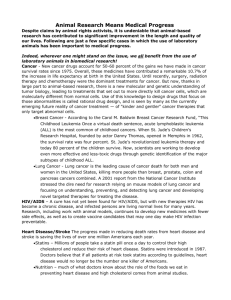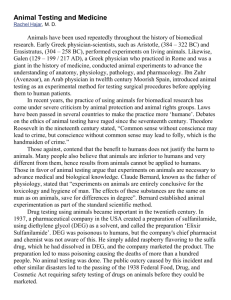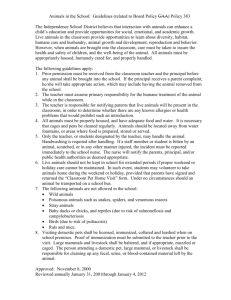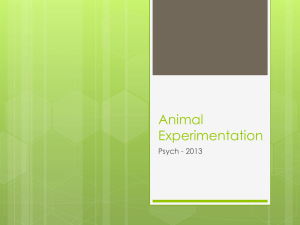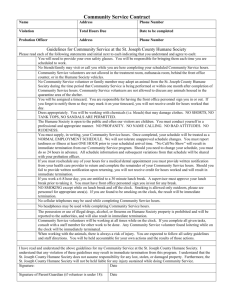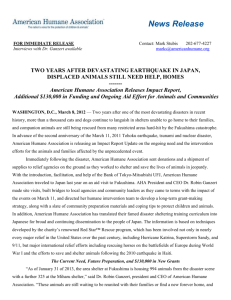Writing Item Sampler
advertisement
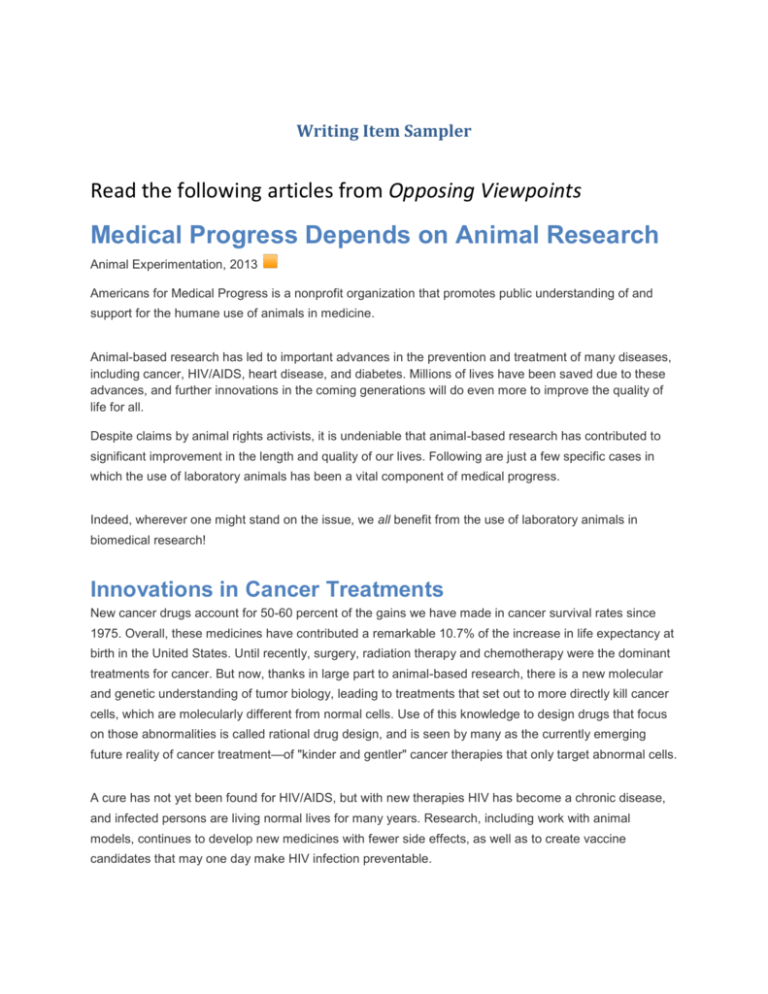
Writing Item Sampler Read the following articles from Opposing Viewpoints Medical Progress Depends on Animal Research Animal Experimentation, 2013 Americans for Medical Progress is a nonprofit organization that promotes public understanding of and support for the humane use of animals in medicine. Animal-based research has led to important advances in the prevention and treatment of many diseases, including cancer, HIV/AIDS, heart disease, and diabetes. Millions of lives have been saved due to these advances, and further innovations in the coming generations will do even more to improve the quality of life for all. Despite claims by animal rights activists, it is undeniable that animal-based research has contributed to significant improvement in the length and quality of our lives. Following are just a few specific cases in which the use of laboratory animals has been a vital component of medical progress. Indeed, wherever one might stand on the issue, we all benefit from the use of laboratory animals in biomedical research! Innovations in Cancer Treatments New cancer drugs account for 50-60 percent of the gains we have made in cancer survival rates since 1975. Overall, these medicines have contributed a remarkable 10.7% of the increase in life expectancy at birth in the United States. Until recently, surgery, radiation therapy and chemotherapy were the dominant treatments for cancer. But now, thanks in large part to animal-based research, there is a new molecular and genetic understanding of tumor biology, leading to treatments that set out to more directly kill cancer cells, which are molecularly different from normal cells. Use of this knowledge to design drugs that focus on those abnormalities is called rational drug design, and is seen by many as the currently emerging future reality of cancer treatment—of "kinder and gentler" cancer therapies that only target abnormal cells. A cure has not yet been found for HIV/AIDS, but with new therapies HIV has become a chronic disease, and infected persons are living normal lives for many years. Research, including work with animal models, continues to develop new medicines with fewer side effects, as well as to create vaccine candidates that may one day make HIV infection preventable. The progress made in reducing death rates from heart disease and stroke is saving the lives of over one million Americans each year. Scientists have been able to produce and grow a dopamine-producing cell line and test it in mouse models of Parkinson's disease. New Technologies Could Eliminate the Need for Animal Experimentation Andrew Rowan is the chief executive officer of Humane Society International (HSI) and chief scientific officer of the Humane Society of the United States (HSUS). Recent technological advances have greatly reduced the need for animal testing. Given the current rate of technological advance, it is possible that by 2050 researchers will be able to answer important questions about the functioning of healthy and diseased human tissues without subjecting animals to harmful procedures. The US National Academy of Sciences [NAS] released a report in 2007 envisioning a future in which animals would largely disappear from toxicity testing programs. The report, drafted by a panel of experts, proposed that toxicity induced by drugs, food additives, pesticides, and other chemicals be assessed not by observing overt clinical signs in animals but by monitoring perturbations to biological pathways in cultured human cells. Sophisticated bioinformatic technologies could then provide risk predictions that overcome the limitations of animal-based methods, such as low throughput and the questionable relevance of animal results to human physiology. Initially, the report was greeted with skepticism, but that skepticism is giving way to guarded excitement. In response to the NAS report, the Environmental Protection Agency [EPA], the National Institutes of Health [NIH], the National Toxicology Program [NTP], and the US Food and Drug Administration [FDA] are cooperating to develop new technologies to modernize chemical testing. Former NIH director Elias Zerhouni characterized this effort as the beginning of the end of animal testing. A Fraction of the Time, a Fraction of the Cost We at The Humane Society of the United States and Humane Society International helped establish a consortium in 2009 to promote the need for a coordinated international program of research and development (akin to the Human Genome Project) to implement the NAS vision. We believe that within the next decade or so, we will reach a point where safety testing and risk evaluation of chemicals will be conducted in a fraction of the time, at a fraction of the cost, and with greater predictive relevance for human and environmental safety compared to current, cumbersome animal-based approaches. The initiative has already attracted the attention of many industry partners, including Dow, DuPont, ExxonMobil, Johnson & Johnson, L'Oreal, Procter & Gamble, and Unilever. The movement away from animal experimentation is already underway. Since the mid-seventies, the use of animals in experimentation has fallen by around 50 percent. In a well-constructed essay, explain which essay provides the most compelling argument. Support your argument with details and examples from the texts.
